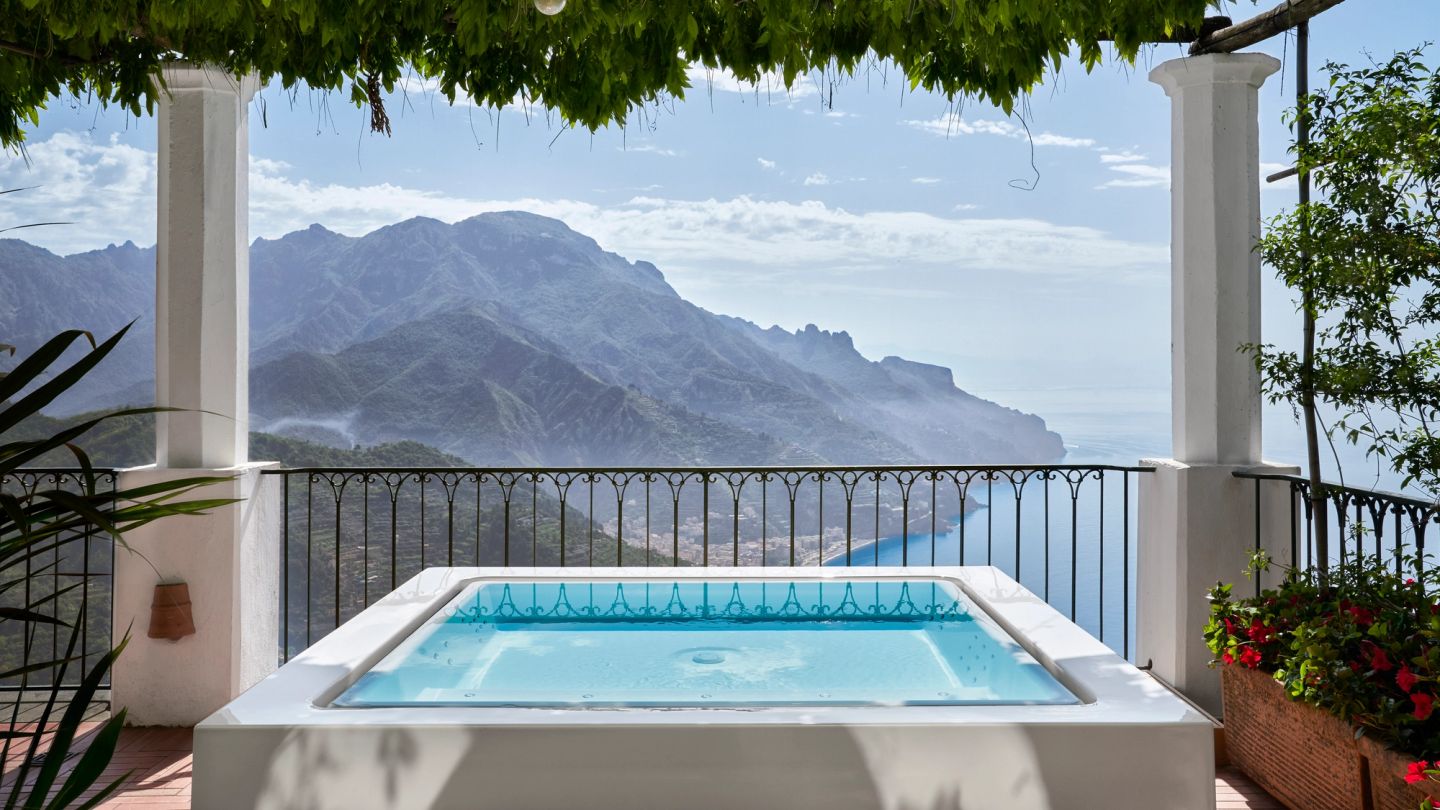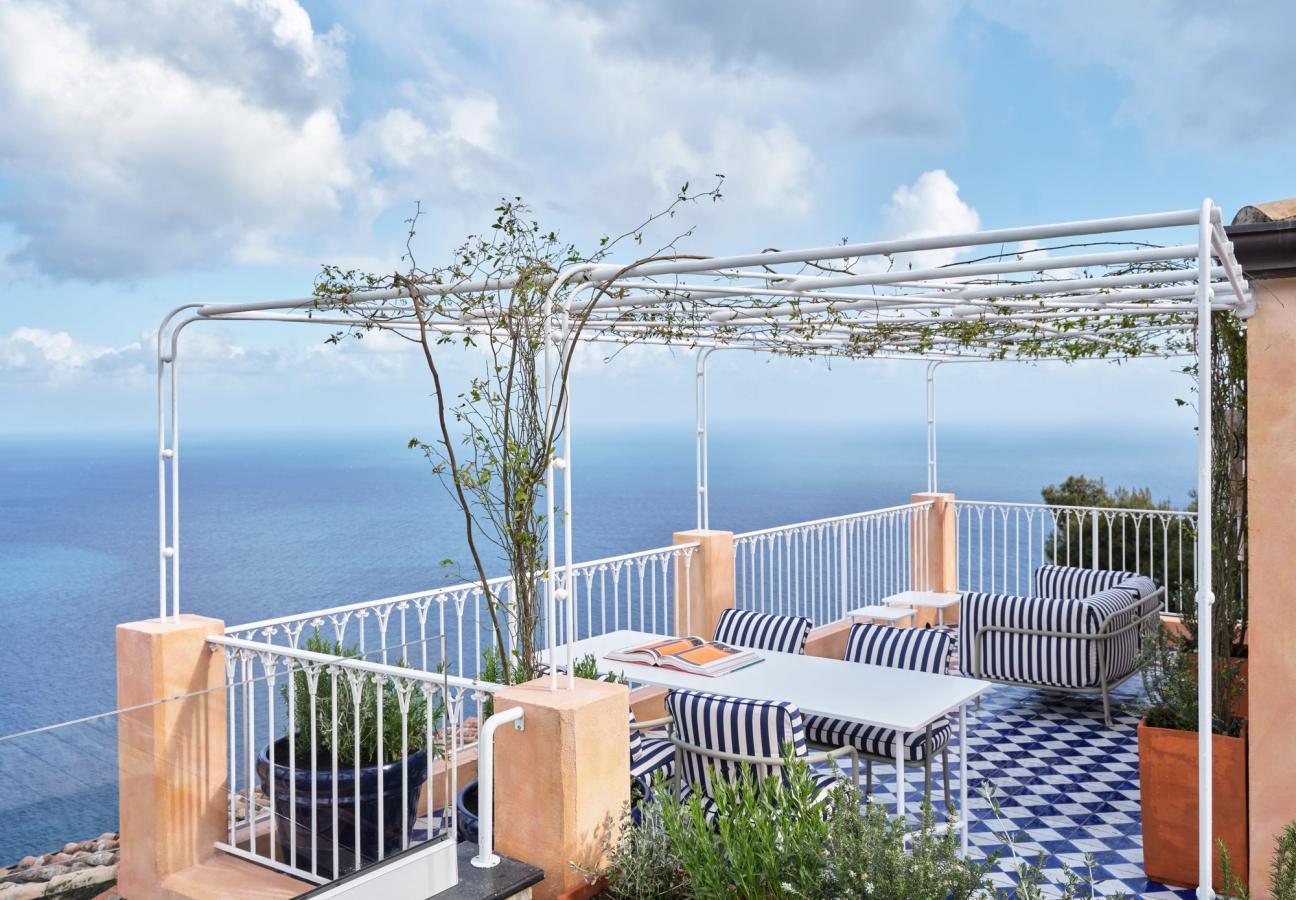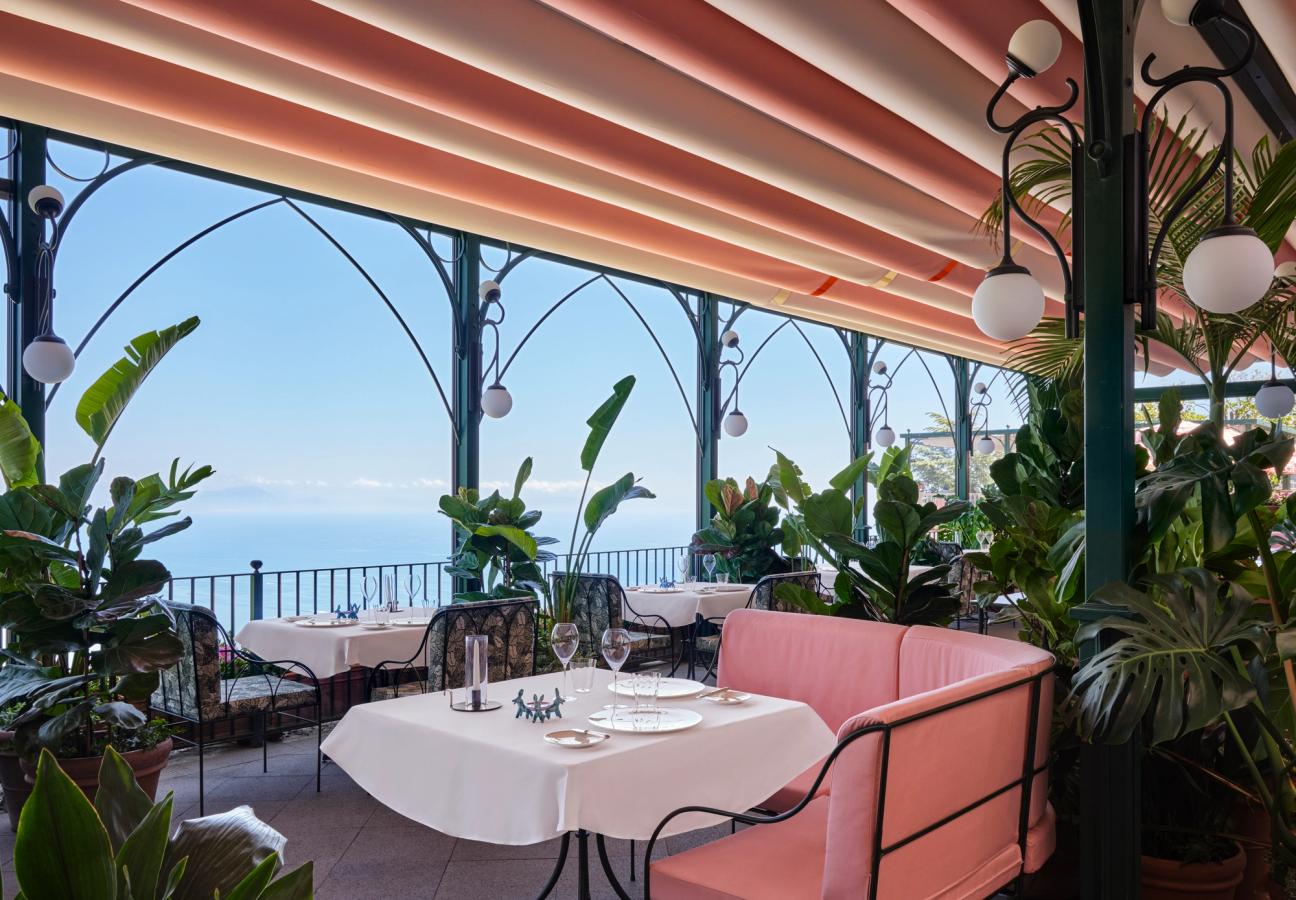

Palazzo Avino is a world unto itself
Known locally as the ‘Pink Palace’, this rose-hued retreat suspended between mountain and sea invites guests to linger just a little longer
- Words: Aobh O'Brien-Moody
Overlooking the Amalfi Coast in the hushed cliffs of Ravello, Palazzo Avino appears at first like an apparition. Against the sea and sky its rose-pink façade seems almost too romantic to be real – a painting from another century. That illusion isn’t far from the truth. Built in the 12th century as the private villa of a noble Italian family, the palazzo has lived many lives. After falling into disrepair, it was purchased in 1997 by the Avino family. Guided by the vision of sisters Mariella and Attilia, it has since been transformed into one of Italy’s most enchanting hotels.
Ravello itself has long been a place apart. Perched high above the Mediterranean, it enjoys a serenity unknown to its more frenzied coastal cousins. Wagner found inspiration here; Gore Vidal made it his home. From the hotel’s terraces, one can see why: the view unfurls in endless blue, with citrus groves tumbling towards pastel villages and fishing boats dotting the horizon. It’s a panorama that encourages a kind of meditative awe.

Inside, the palazzo whispers of noble grandeur. Arched doorways, scallop-backed headboards and domed ceilings all nod to its medieval roots, while the interiors pulse with Mediterranean light. Handmade Vietri tiles gleam underfoot; 18th-century antiques sit comfortably alongside playful contemporary touches introduced in a recent redesign by the Milanese architect Cristina Celestino. The seven suites she reimagined in 2020 are studies in soft curves and celestial hues – rose quartz, aquamarine, moonstone – drawing inspiration from Ravello’s regal gardens and the myths and legends of the Tyrrhenian Sea.

And then there is the Infinito Suite, a sanctum-like space that will engender a spiritual experience even in the most fervent non-believers among us. In 2023, Neapolitan architect Giuliano Andrea Dell'Uva redesigned the expansive duplex suite, which sits proudly at the highest point of the property and features a private terrace with outdoor jacuzzi and panoramic views of the Amalfi Coast. Drawing inspiration from the many cathedrals dotted along the coastline, he incorporated the iconic keyhole shape throughout the space, in doorways, windows and alcoves. Soaring ceilings and whitewashed walls only serve to reinforce the hallowed feel.
There are just 33 rooms and 10 suites, each finished with bespoke details that give the sense of having been individually dressed. Some have balconies or private terraces that seem to hover over the coastline, perfect for lingering breakfasts or late-night toasts. The service here is equally intimate. With a staff-to-guest ratio of almost two to one, there is always a discreet hand at the ready. A knock at the door may bring fresh grapes or champagne; a hand-written turn-down note will certainly be accompanied by chocolates.
Dining is an event in its own right. The hotel’s Michelin-starred restaurant Rossellini’s is perched dramatically on a terrace overlooking the Tyrrhenian Sea. At sunset, the scene feels cinematic: glasses catching the last golden rays, waves flashing silver below. A tasting menu reimagines traditional Campanian flavours with finesse, the five to seven courses expertfully paired with selected regional wines. Breakfast is no less indulgent, taken on a vine-draped veranda as the morning mist lifts from the valley. And then there is the Lobster & Martini Bar, a kind of shrine to decadence, with over a hundred variations of the classic cocktail crafted by the hotel’s in-house mixologist.

The pleasures extend beyond the plate. On the main terrace, a heated pool clings to the cliffside, its water dissolving seamlessly into the sea below. A rooftop solarium, with an infinity hydropool, offers a quieter refuge under the stars. The spa is understated but deeply restorative, complete with Turkish bath, sauna and a gym shaded by white gazebos – a surreal setting for a morning workout as the coast spreads out like a painted backdrop. Guests also have access to Clubhouse by the Sea, the hotel’s private beach club, which is reached by a fifteen-minute shuttle. There, candystriped sunloungers, a saltwater pool and the rhythm of waves conspire to keep one blissfully marooned.
What distinguishes Palazzo Avino most, however, is its character. The Avino sisters are ever-present in the details: in the curated art on the walls, in the capsule collections of Italian designers stocked at the hotel boutique, The Pink Closet, and in the easy warmth that pervades every interaction. It is luxury without stiffness, elegance without pretence. One feels more guest of the family than client of the establishment.
The hotel opens seasonally, from April to October, in rhythm with the Amalfi sun. The sweet spot is late spring or early autumn, when the crowds thin and the light softens, bathing Ravello in a honeyed glow. It is then that Palazzo Avino feels most like a secret.
For more travel inspiration, discover our edit of elegant Mediterrannean villas...


